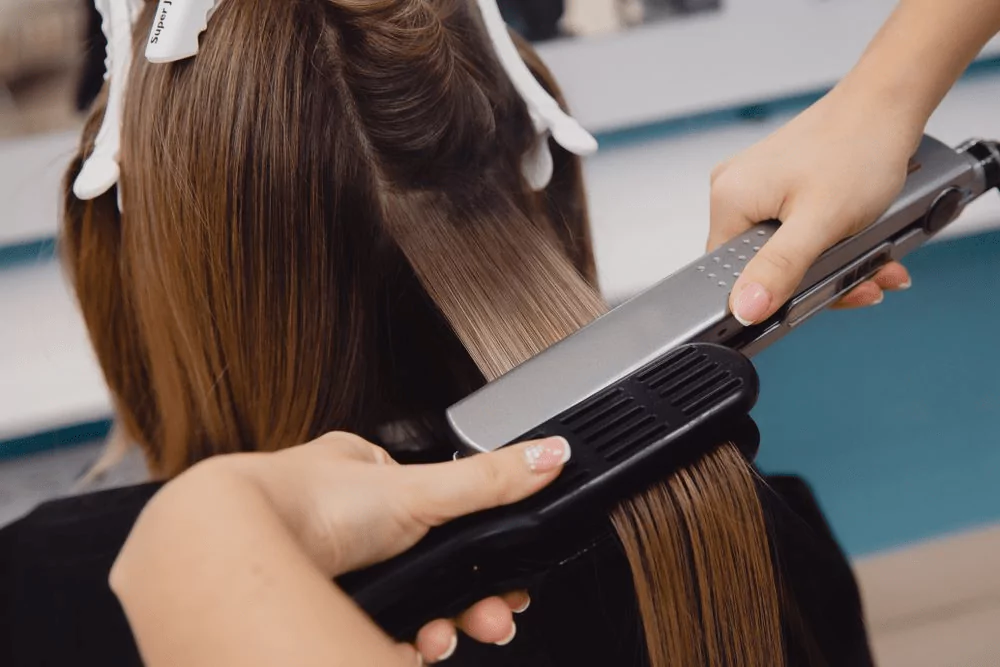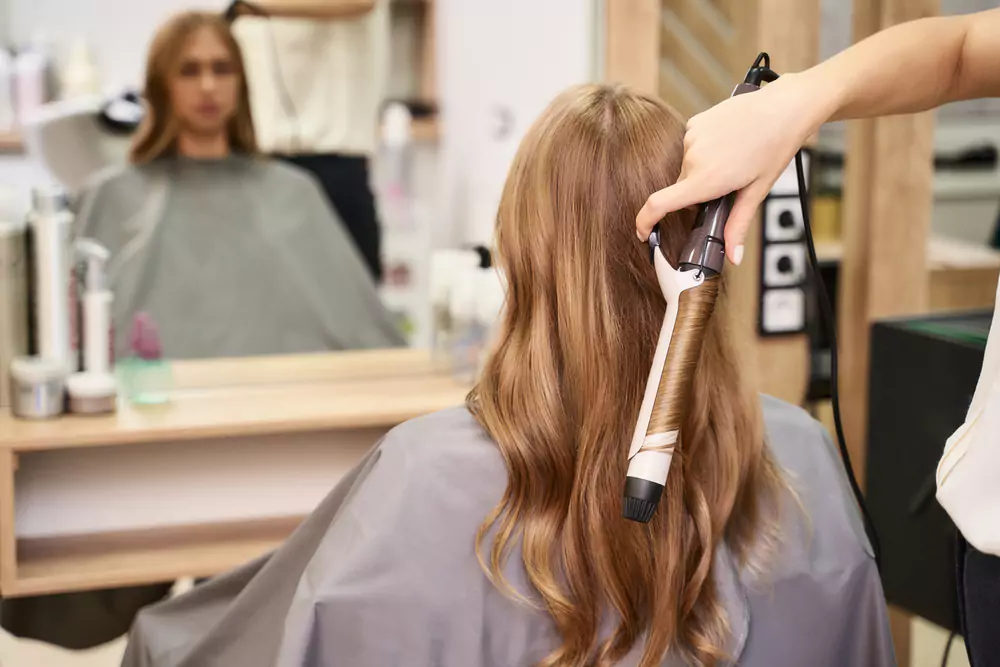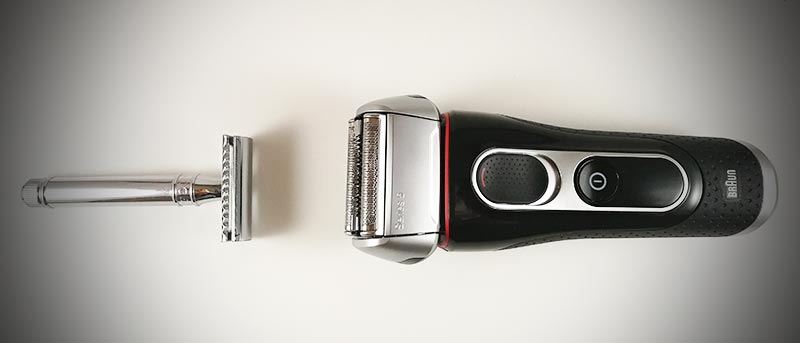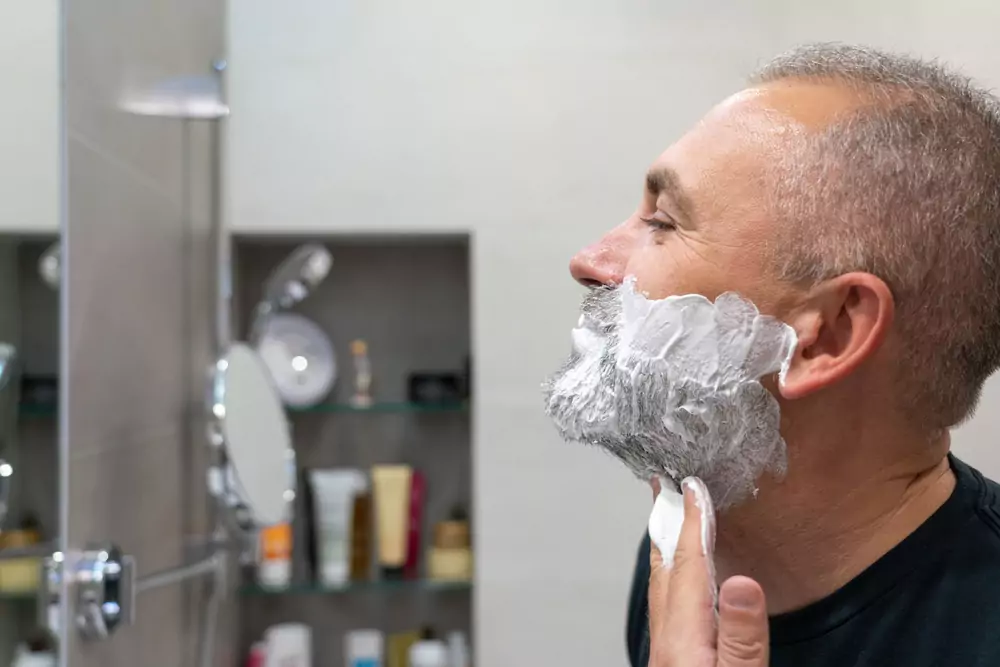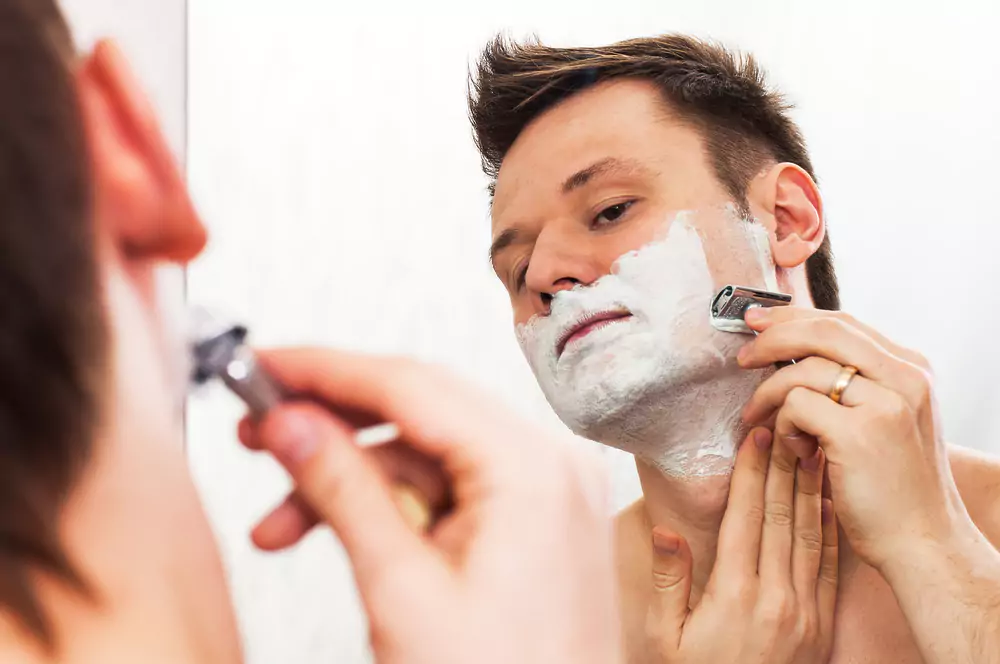Can I relax my hair after a keratin treatment? This is a question many beauty enthusiasts grapple with when considering the best care for their tresses post-keratin application. In the quest for silky, straight strands, understanding the delicate balance between these two popular hair treatments is crucial.
This article will guide you through the essential considerations and provide you with the knowledge to make an informed decision about relaxing your hair after a keratin treatment, ensuring the health and beauty of your locks.
Keratin And Relaxing Treatments
Keratin treatments and hair relaxing are two distinct procedures to achieve smooth and sleek hair. Keratin treatments infuse the hair with proteins to restore and strengthen the hair’s cuticle, resulting in a frizz-free, glossy appearance that can last several weeks. Hair relaxing, on the other hand, involves chemically altering the texture of the hair to straighten curly or coiled strands.
While keratin is about nourishment and temporary retexturing, relaxing is a more permanent method of straightening that changes the hair’s natural bond. Both treatments can dramatically transform the hair’s appearance and texture, but they require careful timing and consideration when used in conjunction.
Effects Of Keratin Treatment On Hair
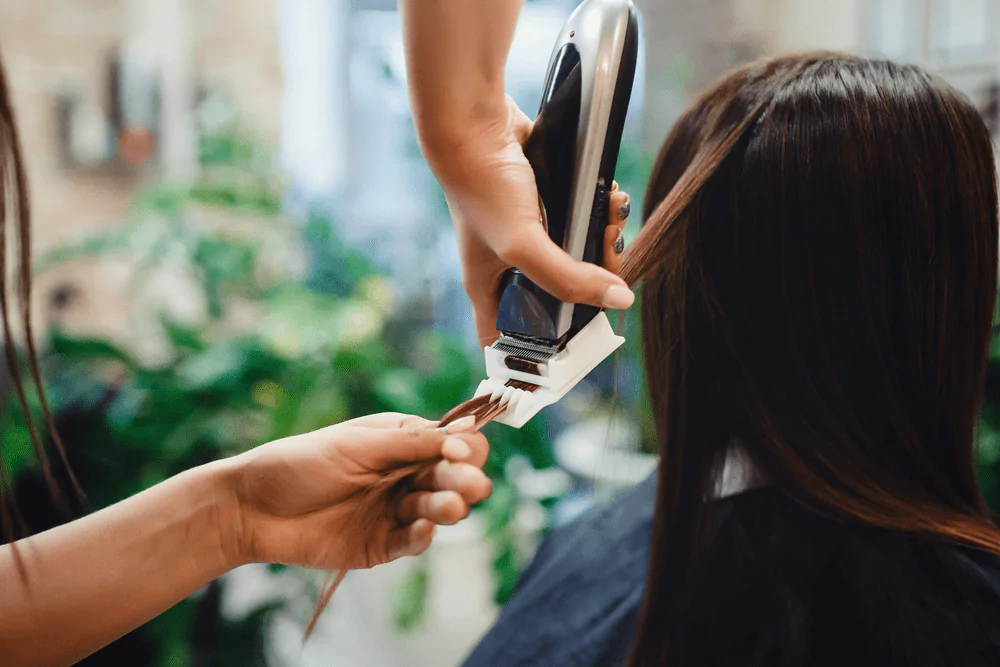

While keratin treatments can provide temporary benefits, it is essential to consider the potential effects on hair health. Here are some of them:
Enhanced Smoothness and Shine
Keratin treatments fill in the gaps in the hair cuticles, leading to a smoother and shinier appearance significantly reducing frizz and flyaways.
Increased Manageability
Post-keratin, hair becomes more manageable, responds better to styling, and can reduce the need for frequent heat styling, which can minimize heat damage.
Longevity of Treatment
The effects of a keratin treatment can last several weeks to a few months, depending on hair type, the specific treatment used, and the aftercare routine.
Potential for Protein Overload
While keratin treatments strengthen hair, too much protein can make hair brittle and stiff. It’s important to balance moisturizing products and treatments.
Impact on Future Chemical Treatments
The protective layer formed by a keratin treatment can interfere with subsequent chemical treatments, potentially leading to less effective results or damage if not done correctly.
Can I Relax My Hair After Keratin Treatment?
Whether you can relax your hair after a keratin treatment depends on various factors, including the condition of your hair and the type of keratin treatment used. Generally, it is recommended to wait at least two weeks before applying any chemical relaxers to give your hair time to stabilize from the keratin treatment.
However, because both treatments involve strong chemicals that can potentially weaken and damage the hair, it’s crucial to consult with a professional hairstylist to assess the health of your hair and determine the best course of action for your specific situation. They can provide personalized advice to ensure your hair remains healthy and withstand multiple treatments.
Timing Considerations For Relaxing After Keratin
When contemplating the timing for applying a relaxer after a keratin treatment, it’s crucial to wait at least two to three weeks, allowing the hair to absorb the keratin fully. Hair professionals often suggest waiting even longer — up to a month — to prevent overlapping treatments from over processing and damaging the hair.
The keratin needs time to settle, and the hair’s bonds need to recover before subjecting them to further chemical alteration. An expert stylist should evaluate the hair’s condition and resilience before proceeding with a relaxer to ensure the hair’s integrity is not compromised.
Risks Of Over Processing With Dual Treatments
Overprocessing with dual treatments refers to the excessive use or application of multiple treatments simultaneously or quickly. While double therapies can be beneficial in some instances, overprocessing can pose several risks and potential adverse effects on the treated material or individual.
Here, we will discuss some of the main risks of overprocessing with dual treatments.
Increased Sensitivity or Irritation
One of the primary risks of overprocessing with dual treatments is an increased sensitivity or irritation of the treated material or individual. When multiple treatments are applied simultaneously or in rapid succession, it can overwhelm the natural defense mechanisms and disrupt the balance of the material or individual’s system. This can lead to heightened sensitivity, irritation, or even allergic reactions.
Damage to the Material or Individual
Overprocessing with dual treatments can also damage the material or individual being treated. Excessive exposure to certain chemicals, heat, pressure, or other treatment methods can weaken the structural integrity of materials or cause harm to living organisms. For example, overprocessing hair with multiple chemical treatments can lead to hair breakage, dryness, and scalp irritation.
Reduced Effectiveness
Another risk of overprocessing with dual treatments is reduced effectiveness. When multiple treatments are applied simultaneously, they may interfere with each other’s efficacy or cancel out their intended effects. This can result in a waste of resources and time spent on treatments that do not provide the desired outcomes. Additionally, overprocessing can lead to a saturation point where further treatment does not yield any additional benefits.
Best Practices For Hair Care Post-Treatment
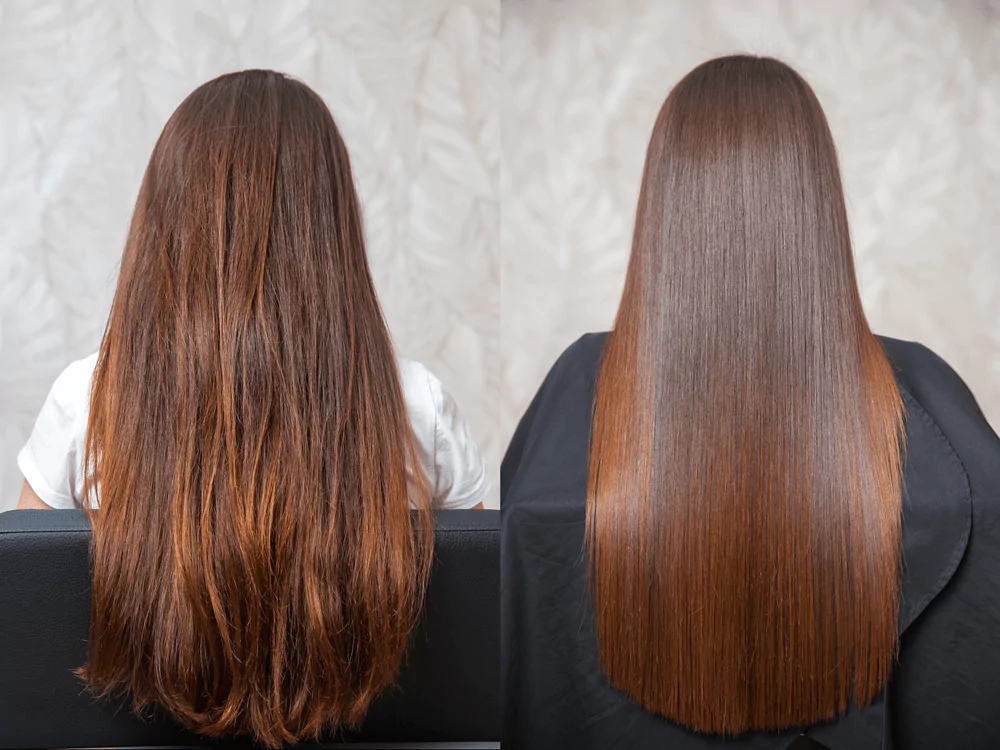

Proper hair care is essential after undergoing any hair treatment to maintain the health and appearance of your hair. Whether you have had a chemical treatment, heat styling, or any other hair procedure, following these best practices will help keep your hair in optimal condition.
Gentle Cleansing
After any hair treatment, it is important to use a gentle shampoo and conditioner specifically formulated for your hair type. Avoid using harsh products that contain sulfates or alcohol, as they can strip away natural oils and cause further damage. Instead, use mild, sulfate-free cleansers that cleanse your hair without causing dryness or irritation.
Moisturize and Hydrate
Hair treatments can often leave the hair dry and brittle. To restore moisture and hydration, it is crucial to use a deep conditioning treatment regularly. Look for products that contain ingredients like shea butter, argan oil, or coconut oil, as they provide intense hydration and nourishment to the hair. Apply the conditioner from mid-length to ends and leave it on for the recommended time before rinsing thoroughly.
Protect from Heat
If your hair treatment involves heat styling or regularly used hot tools on your hair, it is vital to protect your strands from further damage. Before using any heat styling tools, apply a heat protectant spray or serum to create a barrier between your hair and the heat. This will help minimize damage caused by high temperatures and prevent excessive drying or breakage.
Avoid Over styling
While it may be tempting to style your newly treated hair frequently, over styling can lead to damage and breakage. Limit heat styling tools and opt for hairstyles that require minimal manipulation. Avoid tight hairstyles that pull on the hair follicles, which can cause tension and breakage. Embrace natural hairstyles or use gentle accessories like scrunchies or silk/satin hair ties to minimize damage.
Conclusion
In conclusion, it is generally not recommended to relax your hair immediately after a keratin treatment. The chemicals used in relaxers can disrupt the effects of the keratin treatment and lead to damage or breakage of the hair. It is essential to wait at least two weeks before considering any chemical treatments after a keratin treatment to allow the hair to absorb and benefit from the keratin fully.
Additionally, consulting with a professional hairstylist is crucial to determine the best action for your hair type and condition. Taking proper care of your hair post-keratin treatment, such as using sulfate-free shampoos and conditioners, can help maintain the longevity of the treatment and keep your hair healthy and smooth.
FAQs
Can You Relax Over Keratin?
Relaxing over keratin is possible but risky; it’s best to wait several weeks and consult a stylist to avoid damage.
Can I Do Hair Straightening After Keratin Treatment?
Post-keratin, additional straightening should be minimal; use low heat settings to avoid excessive stress on treated hair.
What You Cannot Do After Keratin Treatment?
Avoid washing, tying, or styling your hair for at least 48 hours after a keratin treatment to ensure it sets properly.
What Does Keratin Do To Relax Hair?
Keratin can add strength and shine to relaxed hair, but it should be applied cautiously to prevent protein overload.
Hair Still Frizzy After Keratin Treatment?
If hair is frizzy after keratin, it may be due to improper application or hair condition; consult your stylist for a solution.
How Soon Can I Relax My Hair After Keratin Treatment?
It’s generally advised to wait at least 2-3 weeks before relaxing hair after a keratin treatment to prevent damage.
How To Tie Hair After Keratin Treatment?
After a keratin treatment, wait 48 hours before tying your hair loosely with a silk scrunchie to avoid dents or damage.

